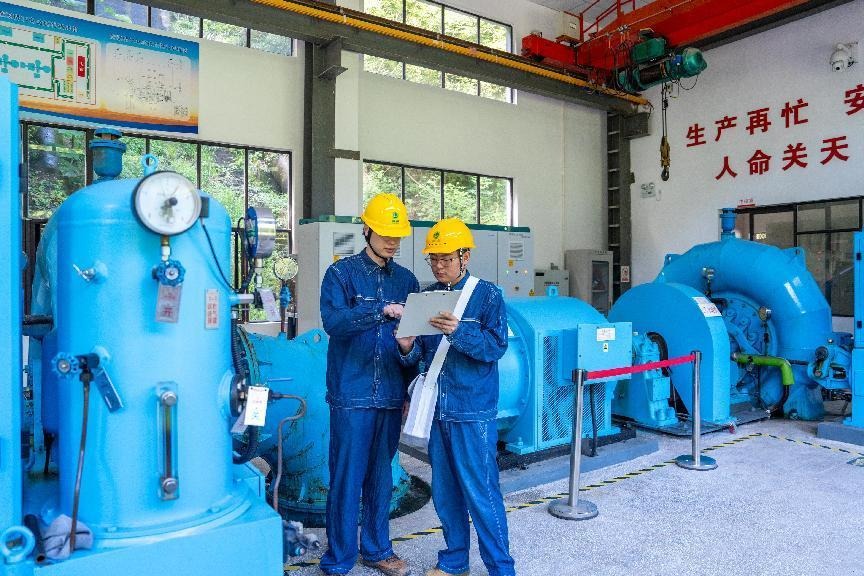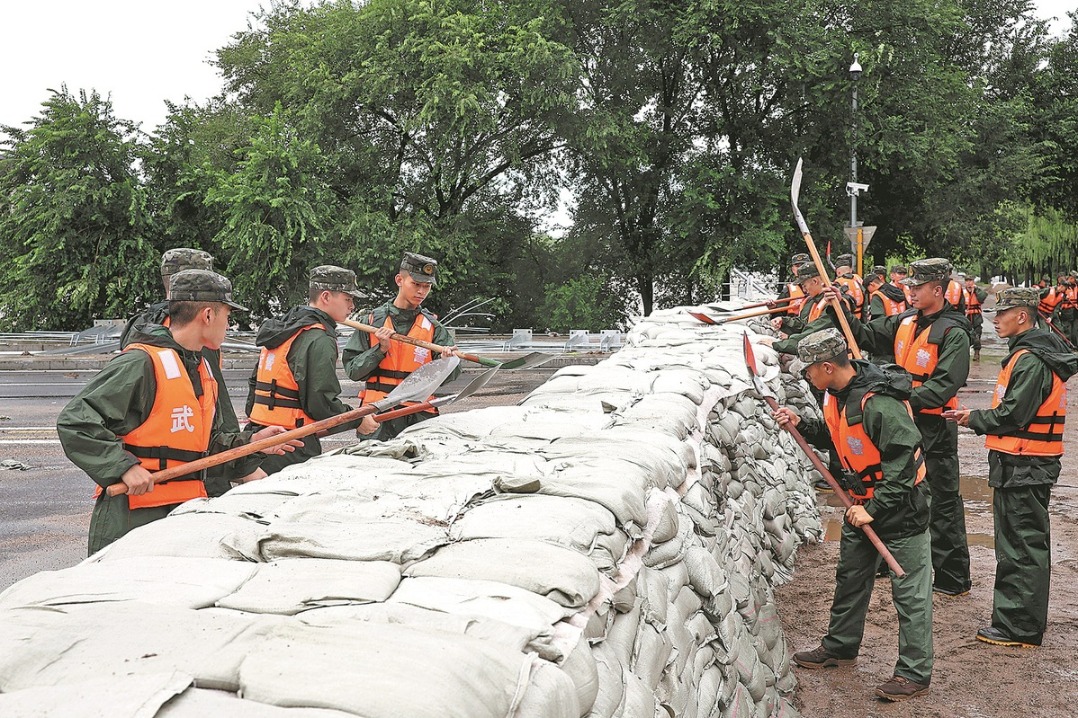Latest NPC deliberations

Lawmakers look at draft on energy again
A draft energy law was submitted for a second review at the ongoing session of the National People's Congress Standing Committee on Tuesday.
New content on the development and utilization of renewable energy, including wind energy, solar energy, biomass energy, geothermal energy, ocean energy and hydrogen energy, was added in the draft, aiming to further facilitate the country's green, low-carbon energy transformation.
The draft also states that China will accelerate the construction of a new type of power system and strengthen the coordinated development of power grids to accommodate, allocate and regulate clean energy.
It is also mentioned in the draft that China encourages energy users to prioritize the use of clean and low-carbon energy by establishing a green energy consumption promotion mechanism.
The draft energy law was submitted to the national legislature for the first review in April this year. It makes stipulations for fundamental and significant issues in the energy sector in response to China's energy development status.
High-standard farmland hits 66.7M hectares
China had developed over 66.7 million hectares of high-standard farmland by the end of last year, with 13 key grain-producing provincial-level regions accounting for around 70 percent of the total, according to a report submitted to a legislative session on Tuesday.
High-standard farmland is characterized by well-leveled, contiguous plots with advanced irrigation, efficient water use and enhanced soil fertility. Designed to withstand both droughts and floods, it aligns with modern agricultural practices and features pollution-free soils and high yields.
The report presented to the session of the Standing Committee of the 14th National People's Congress, China's top legislature, emphasized ongoing efforts to upgrade and expand large and medium-sized irrigation systems while strengthening water usage controls and allocations to secure the country's water resources for grain security.
In the last decade, irrigated farmland has expanded by 8.2 million hectares, bringing the total to 71.7 million hectares that now produce 77 percent of China's grain and over 90 percent of its cash crops.
Health emergency response talks begin
The Standing Committee of the National People's Congress, China's national legislature, began deliberating a draft law on public health emergency response as its latest session opened on Tuesday in Beijing.
The proposed law seeks to regulate the response to public health emergencies and enhance the country's capacity to address such situations, according to the draft. The draft defines public health emergencies as sudden incidents that cause or could cause severe harm to public health and require emergency measures to be taken.
Such incidents include major infectious disease outbreaks, clusters of unexplained illnesses, mass poisoning incidents and other events that significantly impact public health.
Lei Haichao, head of the National Health Commission who co-drafted the legislation, said that the current public health response procedures are based primarily on the regulations on public health emergency response, which took effect in 2003, the Law on the Prevention and Control of Infectious Diseases in 2004 and the Emergency Response Law in 2007.
Xinhua
Today's Top News
- Stable, healthy Sino-US business ties beneficial to all
- Fifth volume of 'Xi Jinping: The Governance of China' published
- Nanjing film aims to counter amnesia
- China and US agree to push for extension of tariff pause after Stockholm negotiations
- US, China trade talks candid, in-depth, constructive, says China intl trade representative
- China unveils delegation for Chengdu World Games






























